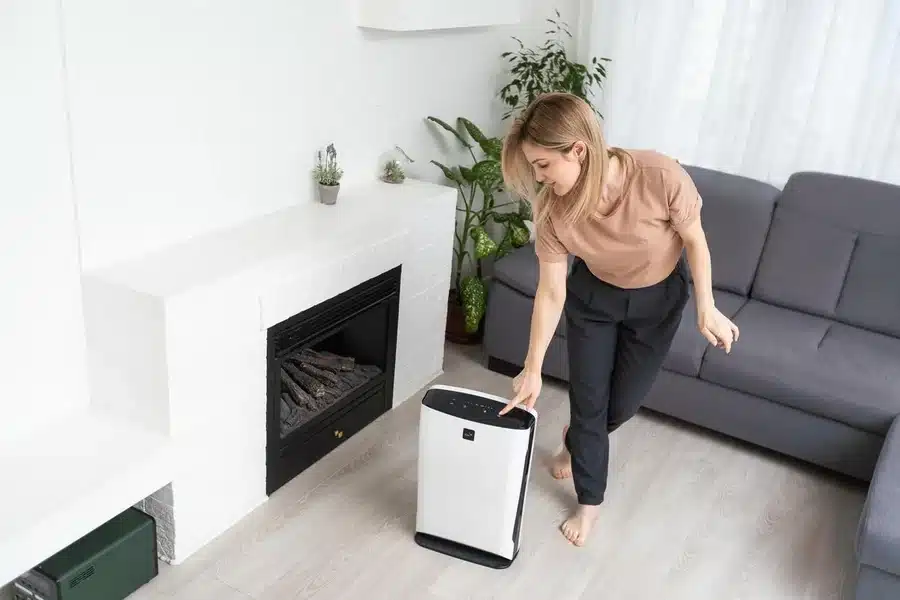Why Your Home Might Feel Damp (and What a Dehumidifier Can Do About It)

You ever walk into your home and feel like the air’s just… heavy? Not hot, not cold—just weirdly sticky, like your walls are breathing on you? That’s dampness creeping in. And no, you’re not imagining it.
There’s a lot going on behind that sticky air. If left unchecked, that “meh” feeling in the air can quietly lead to bigger dramas around the house. So, what’s really causing that clammy vibe, and how can dehumidifiers help you breathe easy again?
What Does a “Damp Home” Really Mean?
When people talk about a house being damp, it doesn’t always mean there’s water dripping from the ceiling or a busted pipe under the sink. Sometimes, it’s a whole lot sneakier than that. It’s more about the air—when it feels thicker than it should, like your house is wearing a wet blanket.
Think about your usual day at home. You jump in the shower first thing, steam everywhere. Then you chuck a load of washing on the clothes horse in the living room, because let’s face it, not everyone has a backyard clothesline anymore. Add in a bit of cooking—maybe a stew or some pasta boiling away—and just like that, your house is filling up with moisture.
All that moisture from normal, everyday life has to go somewhere, right? If your home’s not properly ventilated—or if the humidity outside is already sky-high—it all starts to hang around. In the air. On your windows. Inside your cupboards. Sometimes even in the walls and floors. And the thing is, you won’t always see it.
Sneaky Signs Your Home Has a Moisture Problem
Not every damp home screams “leak!” Some whisper it. If you’re picking up on any of these subtle signals, humidity could be the culprit:
- Musty smells in rooms that aren’t particularly dirty
- Condensation forming on windows even when it’s not freezing outside
- Warped wooden furniture or peeling paint
- Persistent sneezing or coughing, especially at night
Why Moisture is the Silent Enemy of Your Home
Moisture may seem harmless—after all, it’s just water, right? Not quite. Give it time and it becomes a troublemaker.
Excess humidity creates a perfect breeding ground for mould, mildew, and bacteria. These nasties don’t just ruin the vibe; they can wreck your walls, spoil your timber floors, and trigger respiratory issues. Even your electronics and soft furnishings aren’t safe from the damage.
Once it starts, it spreads. A little damp patch today can mean a full-blown ceiling stain or funky carpet smell tomorrow. The longer you ignore it, the harder (and costlier) it gets to fix.
Where in the House Is It Worst? (Hint: It’s Not Just the Bathroom)
Think the bathroom’s the only trouble spot? Think again. Humidity loves to settle wherever air circulation is poor and moisture builds up:
- Laundry rooms, especially those with dryers or no vents
- Bedrooms, where we breathe out litres of moisture overnight
- Wardrobes, where stagnant air and fabric trap moisture like magnets
Even kitchens and garages are guilty. If you’ve noticed funky smells in your linen cupboard or a constant fog on your bedroom window, humidity is quietly making itself at home. And where air doesn’t flow, dampness tends to grow.
What a Dehumidifier Actually Does
A dehumidifier is like a vacuum for moisture. It pulls humid air in, strips out the excess water, and blows out dry, comfy air. What you’re left with is a home that feels lighter.
But here’s the real magic: dehumidifiers, such as the ones from reliable brands like Mitsubishi Electric, do more than just reduce that sticky feeling. They lower the chance of mould growth, make your air conditioner more efficient, and can even extend the life of your furniture and electronics.
Plus, a dehumidifier works quietly in the background—no fuss, no constant attention. Just set it and let it work its science. Some models even monitor humidity automatically, turning on only when needed. It’s like having your own little climate manager!
Choosing the Right Dehumidifier for Your Space
Size does matter, especially when it comes to dehumidifiers. Pick one too small, and you’ll barely make a dent in the humidity. Too big? You’ll waste power and cash. Before buying, ask yourself these questions:
- How big is the space you’re using it in?
- Is the room fully enclosed or connected to other areas?
- Are you dealing with heavy-duty moisture (like laundry drying) or just mild stuffiness?
You’ll also want to look at tank size, energy efficiency, and whether it comes with auto sensors or drainage options. The good news? Once you nail the size and features, you’ll likely only need one to make a world of difference.
In the end, a quality dehumidifier isn’t just a fix—it’s an upgrade. It creates an environment where your home feels fresher, furniture lasts longer, and mornings don’t start with a sneeze. So if your walls are sweating or your air feels a bit swampy, don’t shrug it off. Sometimes, a little dry air goes a long way.
